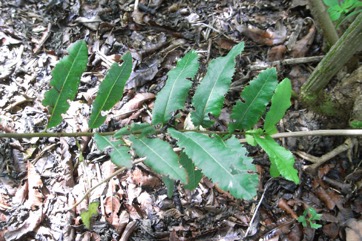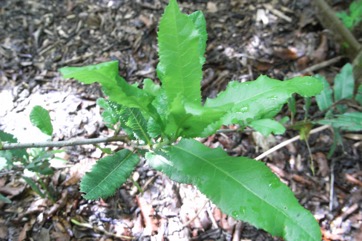South African Cherry, Indaba tree, Sand apple

A tropical plant. It grows in tropical and subtropical places. It grows in the lowlands and the highlands. It suits moister places. It is often in open woodland and along rivers. It grows among rocks. Established trees can tolerate frost and drought. It grows in areas with an annual rainfall between 50-890 mm. It can grow in weakly salty soils. It grows between 30-2,400 m above sea level. It can grow in arid places. It also grows on termite mounds.
Also known as:
Biiqqaa, Biqa, Bushveld cherry, Defi, Doppruim, Eceparake, Ilitshe, Imimena, Ingqalutshe, Indaba tree, Jacket plum, Kiva, Kyuua, Liatsa, Mba, Mboboyo, Molalakgaka, Mopenengwe, Mopennengwa, Moroba-diepe, Morodolodi, Mothatha, Mtundawe, Muhungulu, Mukhomanhudo, Muno we muchenya, Mupusyu, Mwimafiguru, Omangi, Umgqongqongo, Umgqogpo, Umkhokhwane, Umtshulantshula, Umumena, Uzagogwane, Wild plum, Zikwakwashu
Synonyms
- Sapindus capensis (Eckl. & Zeyh.) Hochst.
- Sapindus pappea Sond.
- Pappea radlkoferi Schweinf. ex Radlk.
- Pappea ugandensis Bak.f.
- Pappea fulva Conrath
- Pappea capensis Eckl. & Zeyh. var. radlkoferi (Schweinf. ex Radlk.) Schinz
- Pappea radlkoferi var. angolensis Schleht.
- Pappea schumanniana Schinz
Edible Portion
- Fruit, Seeds, Bark - tea, Leaves, Seeds - oil
Where does South African Cherry grow?
Found in: Africa, Botswana, East Africa, Eswatini, Ethiopia, Kenya, Malawi, Mozambique, Namibia, Rwanda, Somalia, South Africa, Southern Africa, Swaziland, Tanzania, Uganda, Zambia, Zimbabwe
Status: The fruit are eaten especially by children.
Growing South African Cherry, Indaba tree, Sand apple
Cultivation: Plants can be grown from fresh seeds. Seeds can be collected from fruit on the tree and the flesh is removed. Seeds sown in warm weather can germinate in 2 weeks. Seedlings can be transplanted at the 4 leaf stage. Trees can be cut back and allowed to re-grow.
Edible Uses: The fruit are eaten raw. They can also be made into drinks and jellies. They can be dried. The fruit can be used to make vinegar or used for beer. The seeds are the source of an edible oil. The inner bark is dried and grated to make a tea.
Production: Seedlings grow slowly but more quickly later.
Nutrition Info
per 100g edible portion| Edible Part | Energy (kcal) | Protein (g) | Iron (mg) | Vitamin A (ug) | Vitamin c (mg) | Zinc (mg) | % Water |
|---|---|---|---|---|---|---|---|
| Fruit | - | - | 0.6 | - | - | 0 | 89 |
| - | - | - | - | - | - |
South African Cherry, Indaba tree, Sand apple Photos


References
Acevedo-Rodriguez, P., et al, Sapindaceae in Kubitzki, K., (Ed.), 2011, The Families and Genera of Vascular Plants. Vol. 10, Springer. p 396
Asfaw, Z. and Tadesse, M., 2001, Prospects for Sustainable Use and Development of Wild Food Plants in Ethiopia. Economic Botany, Vol. 55, No. 1, pp. 47-62
Ashagre, M., et al, 2016, Ethnobotanical study of wild edible plants in Burji District, Segan Area Zone of Southern Nations, Nationalities and Peoples Region (SNNPR), Ethiopia. Journal of Ethnobiology and Ethnomedicine (2016) 12:32
Bigirimana, C., et al, 2016, Utilisation of Indigenous Fruit Tree Species within the Lake Victoria Basin, Rwanda. Agricultural Science: An International Journal. (AGRIJ) Vol. 1, No. 1
Cunningham, 1985,
Enum. pl. afric. austral. 53. 1834-1835
Fowler, D. G., 2007, Zambian Plants: Their Vernacular Names and Uses. Kew. p 60
Fox, F. W. & Young, M. E. N., 1982, Food from the Veld. Delta Books. p 333
Gemedo-Dalle, T., et al, 2005, Plant Biodiversity and Ethnobotany of Borana Pastoralists in Southern Oromia, Ethiopia. Economic Botany 59(1) pp. 43-65
Glover, 1967,
Goode, P., 1989, Edible Plants of Uganda. FAO p 30
Grivetti, 1976, 1979,
Grivetti, L. E., 1980, Agricultural development: present and potential role of edible wild plants. Part 2: Sub-Saharan Africa, Report to the Department of State Agency for International Development. p 80
INFOODS:FAO/INFOODS Databases
Joffe, P., 2007, Creative Gardening with Indigenous Plants. A South African Guide. Briza. p 60
Johns, T., and Kokwaro, J.O., 1991, Food Plants of the Luo of Siayo District, Kenya. Economic Botany 45(1), pp 103-113
Johns, T., Mhoro, E. B. and Sanaya, P., 1996, Food Plants and Masticants of the Batemi of Ngorongoro District, Tanzania. Economic Botany, Vol. 50, No. 1, pp. 115-121
JSTOR Global Plants edible (As Sapindus pappea)
Long, C., 2005, Swaziland's Flora - siSwati names and Uses http://www.sntc.org.sz/flora/
Lulekal, E., et al, 2011, Wild edible plants in Ethiopia: a review on their potential to combat food insecurity. Afrika Focus - Vol. 24, No 2. pp 71-121
Malaisse, F., 1997, Se nourrir en floret claire africaine. Approche ecologique et nutritionnelle. CTA., p 65
Mannheimer, C. A. & Curtis. B.A. (eds), 2009, Le Roux and Muller's Field Guide to the Trees and Shrubs of Namibia. Windhoek: Macmillan Education Namibia. p 300
Mason, 1971,
Maundu, P. et al, 1999, Traditional Food Plants of Kenya. National Museum of Kenya. 288p
Mbuya, L.P., Msanga, H.P., Ruffo, C.K., Birnie, A & Tengnas, B., 1994, Useful Trees and Shrubs for Tanzania. Regional Soil Conservation Unit. Technical Handbook No 6. p 376
Motlhanka, D. M. T., et al, 2008, Edible Indigenous Fruit Plants of Eastern Botswana. International Journal of Poultry Science. 7(5): 457-460
Mutie, F. G., 2020, Conservation of Wild Food Plants and Their Potential for Combatting Food Insecurity in Kenya as Exemplified by the Drylands of Kitui County. Plants 2020, 9, 1017
Palgrave, K.C., 1996, Trees of Southern Africa. Struik Publishers. p 534
Palmer, E and Pitman, N., 1972, Trees of Southern Africa. Vol. 2. A.A. Balkema, Cape Town p 1357
Peters, C. R., O'Brien, E. M., and Drummond, R.B., 1992, Edible Wild plants of Sub-saharan Africa. Kew. p 181
Roodt, V., 1998, Trees & Shrubs of the Okavango Delta. Medicinal Uses and Nutritional value. The Shell Field Guide Series: Part 1. Shell Botswana. p 197
Royal Botanic Gardens, Kew (1999). Survey of Economic Plants for Arid and Semi-Arid Lands (SEPASAL) database. Published on the Internet; http://www.rbgkew.org.uk/ceb/sepasal/internet [Accessed 10th June 2011]
Ruffo, C. K., Birnie, A. & Tengnas, B., 2002, Edible Wild Plants of Tanzania. RELMA p 508
Ruiters-Welcome, A. K., 2019, Food plants of southern Africa. Ph.D. thesis. Univ. of Johannesburg p 100
Schmidt, E., Lotter, M., & McCleland, W., 2007, Trees and shrubs of Mpumalanga and Kruger National Park. Jacana Media p 372
Shava, S., 2000, The Use of Indigenous Plants as Food by a Rural Community in the Eastern Cape: an Educational Exploration. Masters Thesis Rhodes University. p 66
Tredgold, M.H., 1986, Food Plants of Zimbabwe. Mambo Press. p 114
van Wyk, Be., & Gericke, N., 2007, People's plants. A Guide to Useful Plants of Southern Africa. Briza. p 50
van Wyk, B, van Wyk, P, and van Wyk B., 2000, Photographic guide to Trees of Southern Africa. Briza. p 10, 225
van Wyk, B-E., 2011, The potential of South African plants in the development of new food and beverage products. South African Journal of Botany 77 (2011) 857–868
Venter, F & J., 2009, Making the most of Indigenous Trees. Briza. p 224
Wehmeyer, A. S, 1986, Edible Wild Plants of Southern Africa. Data on the Nutrient Contents of over 300 species
Williamson, J., 2005, Useful Plants of Malawi. 3rd. Edition. Mdadzi Book Trust. p 187
World Checklist of Useful Plant Species 2020. Royal Botanic Gardens, Kew
www.zimbabweflora.co.zw 2011